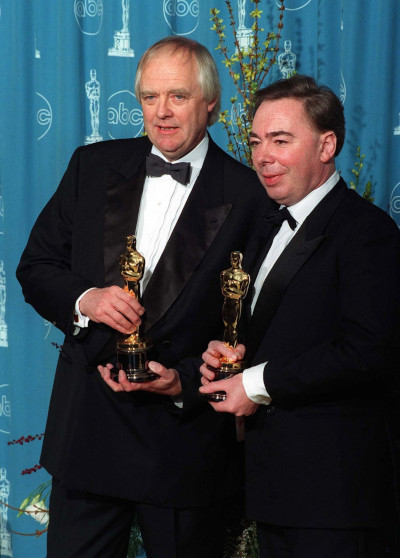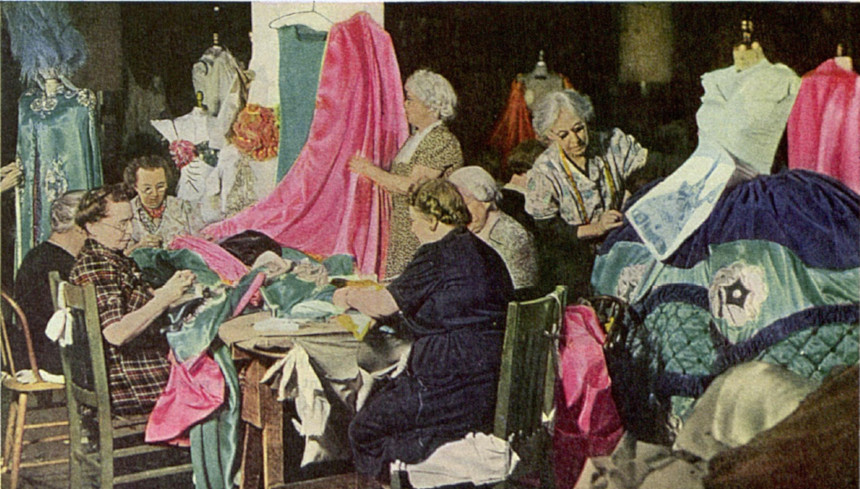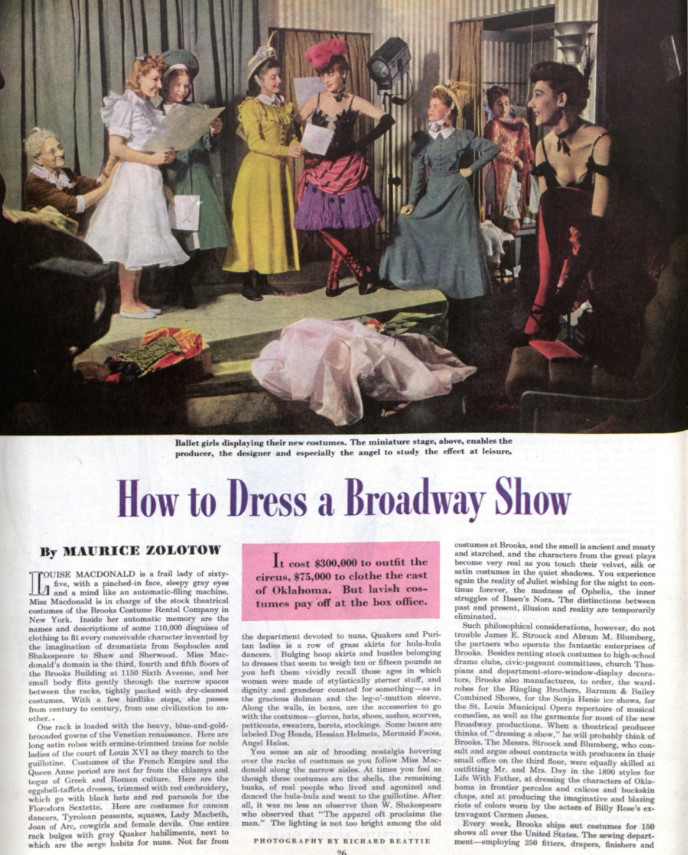50 Years of Jesus Christ Superstar
In the beginning, none of it started on the stage. That’s how it seemed to go for composer Andrew Lloyd Webber and lyricist Tim Rice. The pair began their musical partnership in the 1960s, but it took years for their work to find its way into the avenue that would make them famous: the stage musical. Even Jesus Christ Superstar, which would hit the stage to great success and acclaim in 1971, began life on vinyl as a rock opera concept album. Released 50 years ago this month, Jesus Christ Superstar was the true launch pad for two of the most successful careers in theater. Here’s how a failed Eurovision submission and a new look at the New Testament became a musical classic.
“Any Dream Will Do” from Joseph and the Amazing Technicolor Dreamcoat (Uploaded to YouTube by The Shows Must Go On!)
Webber was born into a family of musicians and was composing his own material by age nine. He studied at the Royal College of Music in the mid 1960s. In 1965, he met Rice, who had a talent for lyrics and would soon be working in the music industry for EMI. The pair collaborated on a musical about the Irish philanthropist Thomas John Barnardo; called The Likes of Us, it wouldn’t be performed in public until 2005. However, the work led to the duo being asked to write a cantata for London’s Colet Court school; the result was a 15-minute, embryonic version of what would become Joseph and the Amazing Technicolor Dreamcoat. Webber and Rice revised and expanded it for years until it got its own release in 1972.

In 1969, Webber and Rice tried to get into the Eurovision Song Contest with an entry titled, appropriately, “Try It and See.” Though the song wasn’t chosen, it would be rewritten and woven into their next big project as “King Herod’s Song.” Rather than put their story straight to the stage, the duo recorded it as a rock opera concept album first. Based loosely on the last few days of the life of Jesus Christ, Jesus Christ Superstar takes its inspiration from the New Testament, but isn’t a literal interpretation. It’s a “sung-through” show, meaning that all of the dialogue is sung, with no breaks for simply spoken passages. The point-of-view character for much of the show is Judas, whose struggles with Christ’s approach to his mission lead to his betrayal of his friend and his eventual suicide.
In the original promo video for the album, Murray Head performs “Superstar” (Uploaded to YouTube by LiveVideoAZ)
To make the album, Webber and Rice brought in a mix of performers from both the U.K. stage and British rock acts. The role of Jesus was filled out by Deep Purple frontman Ian Gillan, while Judas was performed by Murray Head (many Americans know him from the single from the musical Chess, “One Night in Bangkok;” he’s also the brother of Anthony Stewart Head, best-known as Giles from Buffy the Vampire Slayer). Mary Magdalene was brought to life by Yvonne Ellman, who would go on to reprise the role in the film version; Ellman also sang the #1 hit “If I Can’t Have You” from the Saturday Night Fever soundtrack.
The disc began making waves around the world upon its September release, and by 1971, it was selling strong before the musical had even been produced in the States. The show was first performed in the U.S. as a concert in Pittsburgh in July of 1971; Ellman played Mary Magdalene, and Carl Anderson played Judas (as he would in the later film adaptation). The album went to #1 in the U.S. In October, the show opened on Broadway (with Ellman). Though some groups objected to the musical (notably, those that thought that the text wasn’t religious enough, and those that found the Jewish characters to be depicted as more villainous), the show proved to be enduringly popular.
The trailer for the 1973 film Jesus Christ Superstar (Uploaded to YouTube by Movieclips Classi Trailers)
The 1973 film adaption, directed by Norman Jewison, earned Golden Globe nominations for Ellman, Anderson, and Ted Neeley, who played Jesus. An adaptation filmed for television in 1999 won an International Emmy Award for Best Performing Arts Film. More recently, NBC mounted a live concert version on Easter Sunday in 2018; notable cast members included John Legend as Jesus, Brandon Victor Dixon as Judas, Sara Bareilles as Mary Magdalane, and Alice Cooper as King Herod.
Sara Bareilles and Andrew Lloyd Webber perform “I Don’t Know How to Love Him” (Uploaded to YouTube by NBC)
The success of the original musical catapulted Webber and Rice into fame. It allowed them to mount Joseph as a successful production; they reteamed for Evita in 1976 and collaborated on The Wizard of Oz in 2011. On his own and with other collaborators, Webber has had enormous success, including Cats, The Phantom of the Opera, and Sunset Boulevard. Rice has also done extraordinarily well, co-writing Chess with Benny and Bjorn of ABBA, co-writing Aida with Elton John, and providing lyrics for Disney films like Aladdin and The Lion King. Webber and Rice are two of only sixteen people to have an “EGOT,” having won at least one Emmy, Grammy, Oscar, and Tony in their careers.
The ongoing popularity of Jesus Christ Superstar can be attributed to a number of factors. Obviously, its subject matter is based on a major world religion, and one of the most well-known stories on the planet. But Webber and Rice transformed it into incredibly memorable pop tunes, and tried to express the story in more relatable, human terms. It’s that level of connection that sticks with the watcher or the listener, and its why the album, and the show, still retain their power 50 years later.
Featured image: Dutchmen Photography / Shutterstock
Dressing a 1940s Broadway Musical
The 1940s were a financial low point for Broadway. The rise of the cinema, and subsequently television, provided a cheaper outlet for people seeking escapist entertainment, and the expensive production costs of Broadway shows paired with dwindling viewership led to closure (and conversion to movie houses) of many theaters. By the late 1940s it was necessary to call a meeting of theater unions and discuss the future of the industry.
Despite financial concerns, the 1940s also provided some iconic Broadway musicals, which could be seen for less than $5. Leonard Bernstein’s On the Town debuted in 1944, and Carousel opened in 1945 to critical and audience acclaim. Cole Porter provided the lyrics for the comedic musical Kiss Me Kate, which opened in 1948. In 1946 Ethel Merman starred as the titular Annie in the hit show Annie Get Your Gun. And of course there was 1944’s Oklahoma!, Rogers and Hammerstein’s first collaboration.
With shrinking profits, sacrifices had to be made in some areas, but costuming wasn’t one of them. The gingham shirts and calico frocks of Oklahoma! may have looked simple, but the musical’s costume budget – in 1944 – was $75,000. Where did the clothes come from, and why did they cost so much?
In 1944, The Saturday Evening Post published “How to Dress a Broadway Musical” in which writer Maurice Zolotow claimed, “lavish costumes pay off at the box office.” Zolotow described the Brooks Costume Rental Company, which at the time was one of the largest manufacturers of Broadway and circus costumes. Brooks offered an extensive collection of ready-made costumes for rent (everything from hula skirts to nun’s habits) to schools, community theaters, and off-Broadway houses. But their real calling was making custom costumes for Broadway productions, employing 250 costume makers who could create 20 new costumes a day.

The stars and designers of Broadway would come in for three fittings of each costume to make sure that the garments not only fit perfectly but also fulfilled the designer’s vision. The creation process was so painstaking because the costumes had to be up to task:
A theatrical costume must be made of the best and strongest material, it must be tailored perfectly, it must fit onto a body like a tight, wet bathing suit. It must be made to stand intense punishment, as the character goes through her performance eight times a week. It must stand an intense dry-cleaning once or twice a month. A society woman who has an evening gown made for her may wear the dress six times a year. But the similarly gorgeous evening gowns worn in, say, One Touch of Venus, are worn—and worn to the hilt— every night and twice on matinee days.
This thorough treatment led to hefty costume bills of around $75,000 for a show like Oklahoma!, or about $1 million in today’s dollars. (Circuses were even more expensive, costing upwards of $300,000.)
In those days, costume production for any given show happened within one building. The designer provided the sketches to the manufacturers, who then not only put the design to fabric but created the necessary accessories and wigs. William Ivey Long, a nine-time Tony award winning costume designer who has outfitted The Producers, Hairspray, Cinderella, and dozens of other shows, claims, “Back then there were several big costume shops that would deliver everything from soup to nuts.” Indeed, Brooks also provided “gloves, hats, shoes, sashes, scarves, petticoats, sweaters, berets, stockings.”
In the 75 years since Zolotow explored the Brooks company, many things have changed. Today, instead of bringing a design to one large costume house, Long shops around. He brings his pieces to different specialists and works hard to get the best work at the best price. Where “one-stop-shops” previously dominated the costume scene, modern manufacturers specialize in one aspect of costume. And budgets for modern productions are smaller. While it can cost around $300,000 to outfit a show, that’s only half of the budget for 1944’s Oklahoma! when adjusted for inflation.
In addition, the technological changes to theater have necessitated a change in costume design. “As we speak lighting is changing,” Long explains. The prevalence of LED lighting in theaters casts a blue tint onto the actors, requiring an alteration in the color of their clothes. Long noticed that costumes taken on tour into theaters that have not made the switch to LED lighting looked different than in their original performances and did not provide the same effect.
Today, the large costume houses no longer exist. Costume companies continue to rent out retired Broadway costumes to smaller-scale productions, yet these rental companies do not have nearly the dominance of years past. The Brooks company itself went through several sales, eventually becoming Dodgers Costumes, which closed its doors for good in 2015.
Broadway itself has experienced a surge of popularity in recent years. Despite rising ticket prices, 2019 marks the sixth record-breaking year for attendance in a row. Elevated tourism, recognizable show titles, longer show-runs and run-away hits like Hamilton keep people coming back for more. After all, despite changes in production or ticket prices, the show must go on.

Featured image: Photograph by Richard Beattie